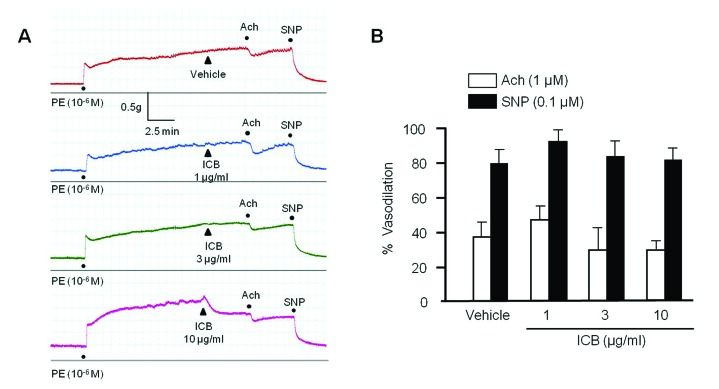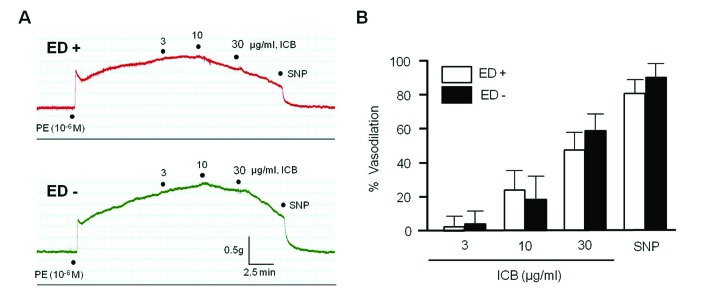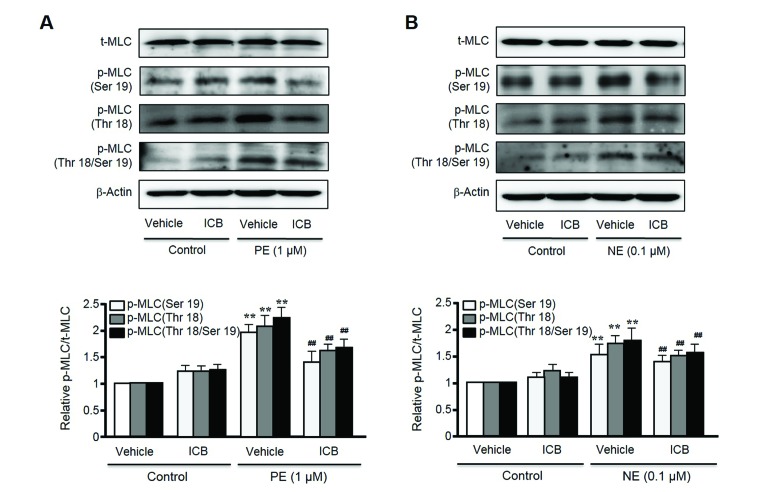1. Flack JM, Oparil S, Pratt JH, Roniker B, Garthwaite S, Kleiman JH, Yang Y, Krause SL, Workman D, Saunders E. Efficacy and tolerability of eplerenone and losartan in hypertensive black and white patients. J Am Coll Cardiol. 2003; 41:1148–1155. PMID:
12679215.

2. Ohanian J, Ohanian V. Lipid second messenger regulation: the role of diacylglycerol kinases and their relevance to hypertension. J Hum Hypertens. 2001; 15:93–98. PMID:
11317187.

3. Touyz RM, He G, Wu XH, Park JB, Mabrouk ME, Schiffrin EL. Src is an important mediator of extracellular signal-regulated kinase 1/2-dependent growth signaling by angiotensin II in smooth muscle cells from resistance arteries of hypertensive patients. Hypertension. 2001; 38:56–64. PMID:
11463760.

4. Staiculescu MC, Galiñanes EL, Zhao G, Ulloa U, Jin M, Beig MI, Meininger GA, Martinez-Lemus LA. Prolonged vasoconstriction of resistance arteries involves vascular smooth muscle actin polymerization leading to inward remodelling. Cardiovasc Res. 2013; 98:428–436. PMID:
23417038.

5. Horowitz A, Menice CB, Laporte R, Morgan KG. Mechanisms of smooth muscle contraction. Physiol Rev. 1996; 76:967–1003. PMID:
8874491.

6. Somlyo AP, Somlyo AV. Signal transduction and regulation in smooth muscle. Nature. 1994; 372:231–236. PMID:
7969467.

7. Kim JI. High fat diet confers vascular hyper-contractility against angiotensin II through upregulation of MLCK and CPI-17. Korean J Physiol Pharmacol. 2017; 21:99–106. PMID:
28066146.

8. Somlyo AP, Somlyo AV. Ca
2+ sensitivity of smooth muscle and non-muscle myosin II: modulated by G proteins, kinases, and myosin phosphatase. Physiol Rev. 2003; 83:1325–1358. PMID:
14506307.
9. Webb RC. Smooth muscle contraction and relaxation. Adv Physiol Educ. 2003; 27:201–206. PMID:
14627618.

10. Christ G, Wingard C. Calcium sensitization as a pharmacological target in vascular smooth-muscle regulation. Curr Opin Investig Drugs. 2005; 6:920–933.
11. Kitazawa T, Gaylinn BD, Denney GH, Somlyo AP. G-protein-mediated Ca
2+ sensitization of smooth muscle contraction through myosin light chain phosphorylation. J Biol Chem. 1991; 266:1708–1715. PMID:
1671041.
12. Gong MC, Cohen P, Kitazawa T, Ikebe M, Masuo M, Somlyo AP, Somlyo AV. Myosin light chain phosphatase activities and the effects of phosphatase inhibitors in tonic and phasic smooth muscle. J Biol Chem. 1992; 267:14662–14668. PMID:
1321813.

13. Mu Y, Zhang J, Zhang S, Zhou HH, Toma D, Ren S, Huang L, Yaramus M, Baum A, Venkataramanan R, Xie W. Traditional Chinese medicines Wu Wei Zi (Schisandra chinensis Baill) and Gan Cao (Glycyrrhiza uralensis Fisch) activate pregnane X receptor and increase warfarin clearance in rats. J Pharmacol Exp Ther. 2006; 316:1369–1377. PMID:
16267138.

14. Huang SX, Li RT, Liu JP, Lu Y, Chang Y, Lei C, Xiao WL, Yang LB, Zheng QT, Sun HD. Isolation and characterization of biogenetically related highly oxygenated nortriterpenoids from Schisandra chinensis. Org Lett. 2007; 9:2079–2082. PMID:
17480084.

15. Rhyu MR, Kim EY, Yoon BK, Lee YJ, Chen SN. Aqueous extract of Schizandra chinensis fruit causes endothelium-dependent and -independent relaxation of isolated rat thoracic aorta. Phytomedicine. 2006; 13:651–657. PMID:
16704926.

16. Park JY, Shin HK, Lee YJ, Choi YW, Bae SS, Kim CD. The mechanism of vasorelaxation induced by Schisandra chinensis extract in rat thoracic aorta. J Ethnopharmacol. 2009; 121:69–73. PMID:
18983904.

17. Park JY, Choi YW, Yun JW, Bae JU, Seo KW, Lee SJ, Park SY, Kim CD. Gomisin J from Schisandra chinensis induces vascular relaxation via activation of endothelial nitric oxide synthase. Vascul Pharmacol. 2012; 57:124–130. PMID:
22728282.

18. Lee YJ, Shim JW, Lee YJ, Park YH, Lee HY, Kim SD, Choi YW, Bae YS. Identification of a novel compound that stimulates intracellular calcium increase and CXCL8 production in human neutrophils from Schisandra chinensis. Biochem Biophys Res Commun. 2009; 379:928–932. PMID:
19138665.

19. Qi H, Li L, Shuai J. Optimal microdomain crosstalk between endoplasmic reticulum and mitochondria for Ca
2+ oscillations. Sci Rep. 2015; 5:7984. PMID:
25614067.

20. Turbedsky K, Pollard TD, Bresnick AR. A subset of protein kinase C phosphorylation sites on the myosin II regulatory light chain inhibits phosphorylation by myosin light chain kinase. Biochemistry. 1997; 36:2063–2067. PMID:
9047304.

21. Chen K, Li C. Recent advances in studies on traditional Chinese anti-aging material medica. J Tradit Chin Med. 1993; 13:223–226. PMID:
8246603.
22. You JS, Pan TL, Hou YC. Schisandra chinensis protects against adriamycin-induced cardiotoxicity in rats. Chang Gung Med J. 2006; 29:63–70. PMID:
16642728.
23. Choi YW, Takamatsu S, Khan SI, Srinivas PV, Ferreira D, Zhao J, Khan IA. Schisandrene, a dibenzocyclooctadiene lignan from Schisandra chinensis: structure-antioxidant activity relationships of dibenzocyclooctadiene lignans. . J Nat Prod. 2006; 69:356–359. PMID:
16562834.

24. Lu Y, Chen DF. Analysis of Schisandra chinensis and Schisandra sphenanthera. J Chromatogr A. 2009; 1216:1980–1990. PMID:
18849034.

25. Park SY, Park SJ, Park NJ, Joo WH, Lee SJ, Choi YW. α-Isocubebene exerts neuroprotective effects in amyloid beta stimulated microglia activation. Neurosci Lett. 2013; 555:143–148. PMID:
24090820.

26. Choi YW, Kim HJ, Park SS, Chung JH, Lee HW, Oh SO, Kim BS, Kim JB, Chung HY, Yu BP, Kim CD, Yoon S. Inhibition of endothelial cell adhesion by the new anti-inflammatory agent alpha-isocubebene. Vascul Pharmacol. 2009; 51:215–224. PMID:
19539051.
27. Park SY, Park TG, Lee SJ, Bae YS, Ko MJ, Choi YW. α-Iso-cubebenol inhibits inflammation-mediated neurotoxicity and amyloid beta 1-42 fibril-induced microglial activation. J Pharm Pharmacol. 2014; 66:93–105. PMID:
24138316.

28. Park SY, Choi YH, Park G, Choi YW. Neuroprotective effects of α-iso-cubebenol on glutamate-induced neurotoxicity. Environ Toxicol Pharmacol. 2015; 40:549–556. PMID:
26322719.

29. Jang MA, Lee SJ, Baek SE, Park SY, Choi YW, Kim CD. α-Iso-Cubebene inhibits PDGF-induced vascular smooth muscle cell proliferation by suppressing osteopontin expression. PLoS One. 2017; 12:e0170699. PMID:
28114367.

30. Safar ME, Balkau B, Lange C, Protogerou AD, Czemichow S, Blacher J, Levy BI, Smulyan H. Hypertension and vascular dynamics in men and women with metabolic syndrome. J Am Coll Cardiol. 2013; 61:12–19. PMID:
23287369.

31. Touyz RM, Schiffrin EL. Increased generation of superoxide by angiotensin II in smooth muscle cells from resistance arteries of hypertensive patients: role of phospholipase D-dependent NAD(P) H oxidase-sensitive pathways. J Hypertens. 2001; 19:1245–1254. PMID:
11446714.
32. Nishimura J, Khalil RA, van Breemen C. Agonist-induced vascular tone. Hypertension. 1989; 13:835–844. PMID:
2544524.

33. Sun N, Hong T, Zhang R, Yang X. The effects of verapamil SR and bisoprolol on reducing the sympathetic nervous system's activity. Hypertens Res. 2000; 23:537–540. PMID:
11016810.

34. Zheng C, Lo CY, Meng Z, Li Z, Zhong M, Zhang P, Lu J, Yang Z, Yan F, Zhang Y, Huang Y, Yao X. Gastrodin inhibits store-operated Ca
2+ entry and alleviates cardiac hypertrophy. Front Pharmacol. 2017; 8:222. PMID:
28487655.

35. Meisheri KD, Hwang O, van Breemen C. Evidence for two separated Ca
2+ pathways in smooth muscle plasmalemma. J Membr Biol. 1981; 59:19–25. PMID:
7241573.
36. Eto K, Ohya Y, Nakamura Y, Abe I, Fujishima M. Comparative actions of insulin sensitizers on ion channels in vascular smooth muscle. Eur J Pharmacol. 2001; 423:1–7. PMID:
11438300.

37. Shibata K, Sakai H, Huang Q, Kamata H, Chiba Y, Misawa M, Ikebe R, Ikebe M. Rac1 regulates myosin II phosphorylation through regulation of myosin light chain phosphatase. J Cell Physiol. 2015; 230:1352–1364. PMID:
25502873.

38. Kokubo Y, Okamura T, Watanabe M, Higashiyama A, Ono Y, Miyamoto Y, Furukawa Y, Kamide K, Kawanishi K, Okayama A, Yoshimasa Y. The combined impact of blood pressure category and glucose abnormality on the incidence of cardiovascular diseases in a Japanese urban cohort: the Suita Study. Hypertens Res. 2010; 33:1238–1243. PMID:
20927111.

39. Seok YM, Cho HJ, Cha BY, Woo JT, Kim IK. Honokiol attenuates vascular contraction through the inhibition of the RhoA/Rhokinase signalling pathway in rat aortic rings. J Pharm Pharmacol. 2011; 63:1244–1251. PMID:
21827498.

40. Kang G, Lee YR, Joo HK, Park MS, Kim CS, Choi S, Jeon BH. Trichostatin A modulates angiotensin II-induced vasoconstriction and blood pressure via inhibition of p66shc activation. Korean J Physiol Pharmacol. 2015; 19:467–472. PMID:
26330760.










 PDF
PDF ePub
ePub Citation
Citation Print
Print


 XML Download
XML Download